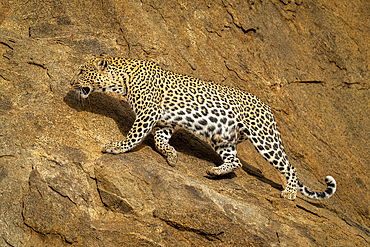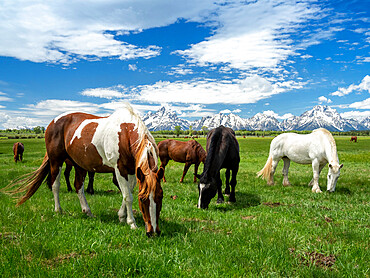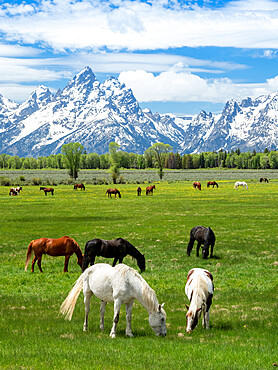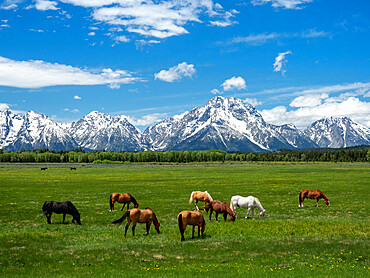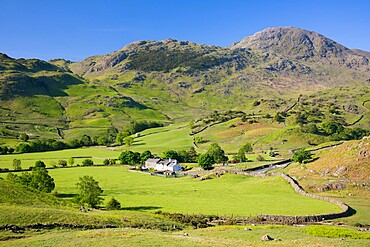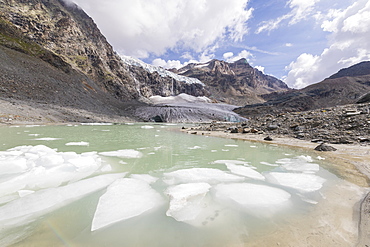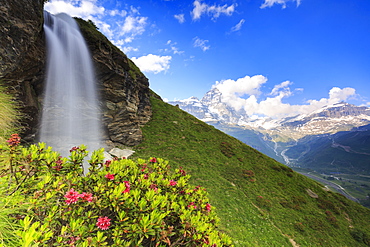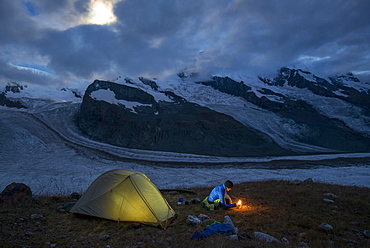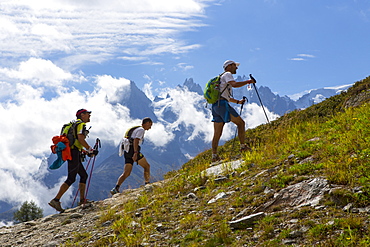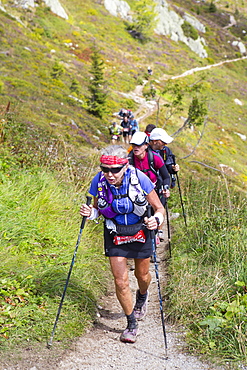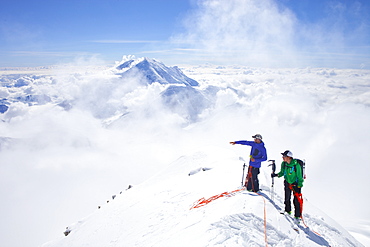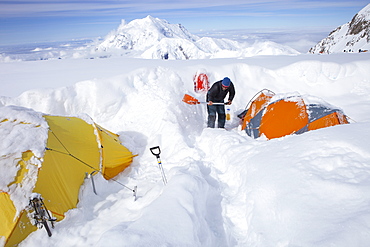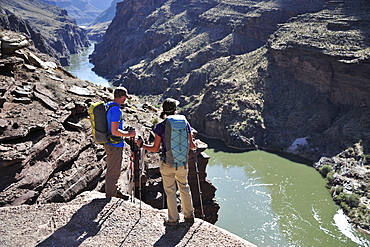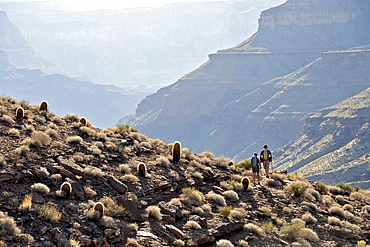Recent searches
Loading...
1372-112 - Big stone torii gate framing more distant gates on the foot of mount Iwaki. Iwakiyama-jinja Shrine Mt Iwaki Shrine in Hirosaki, Japan
1116-52879 - Leopard (Panthera pardus) walking across sloping rockface in sunshine, Laikipia, Kenya
1370-24 - Colorful prayer flags in front of a vast mountain landscape at the foot of the Annapurna Circuit in the Himalayas, Australian Camp, Nepal, Asia
1202-559 - Snow-clad mountains and the Geita River in early winter, at the foot of the Langjokull ice-cap, in the western Highlands, west Iceland, Polar Regions
1179-6083 - Flowing water of stream at foot of Monte Disgrazia in autumn, Alpe Fora, Valmalenco, Valtellina, Lombardy, Italy, Europe
1179-5846 - Mountain huts in the green pastures at foot of Sassolungo and Sassopiatto in spring, Seiser Alm, Dolomites, South Tyrol, Italy, Europe
1113-107386 - Climbing equipment at the foot of the wall - multi-pitch climbing on Leonhardstein, Bavarian Prealps
860-290890 - Sentinel, Andy Goldsworthy, 1999, Col du Defens, Alpes de haute Provence, France "The work Sentinels, which is part of the Refuge d'art project, is a journey through the Dignois region, at the foot of the Southern Alps. Such a project associates art, nature and the territory. The three Sentinels are stone cairns, one for each of the three valleys of the Haute-Provence Geological Reserve.
1242-489 - Grape vines in autumn at the foot of the Rock of Solutre, Saone-et-Loire, Burgundy, France, Europe
1179-5608 - Rorbu in the snow at foot of Olstind mountain overlooking the Arctic Sea, Sakrisoy, Reine, Nordland, Lofoten Islands, Norway, Scandinavia, Europe
1112-6110 - Adult horses (Equus ferus caballus) grazing at the foot of the Grand Teton Mountains, Wyoming, United States of America, North America
1112-6111 - Adult horses (Equus ferus caballus) grazing at the foot of the Grand Teton Mountains, Wyoming, United States of America, North America
1112-6112 - Adult horses (Equus ferus caballus), grazing at the foot of the Grand Teton Mountains, Wyoming, United States of America, North America
1113-104488 - Mother carrying daughter in her arms, lake Starnberg, Berg, Upper Bavaria, Germany
1113-105053 - girl and boy trudging through the snow in winter, Pfronten, Allgaeu, Bavaria, Germany
1113-103237 - Man balancing on a slackline in sunset, Oberstdorf, Bavaria, Germany
1113-103236 - Man hanging on a slackline, Oberstdorf, Bavaria, Germany
1113-103240 - Young man balancing on a slackline, Oberstdorf, Bavaria, Germany
832-389805 - Pasterze, glacier at the foot of the Grossglockner in the Hohe Tauern National Park, mountains, Alps, Austria, Europe
832-389811 - View of the Pasterze glacier at the foot of the Grossglockner, mountain, Alps, Hohe Tauern National Park, Austria, Europe
832-389340 - Ice chapel with meltwater stream, ice field at the foot of the Watzmann east face, Berchtesgaden National Park, Watzmann, Schoenau am Koenigssee, Upper Bavaria, Bavaria, Germany, Europe
1179-4793 - Hikers walking on the Adolf Munkel trail at foot of the Odle, Val di Funes, South Tyrol, Dolomites, Italy, Europe
1179-4789 - Malga Casnago (Gschnagenhardt) hut at foot of the Odle mountains, Val di Funes, South Tyrol, Dolomites, Italy, Europe
1202-449 - Melting ice at the foot of a retreating glacier, Svinafellsjokull, Skaftafell National Park, southern Iceland, Polar Regions
1184-4456 - Platamon Castle at the foot of Mount Olympus, Greece, Europe
1179-4457 - Aerial panoramic by drone of road at foot of Gheralta Mountains canyons, Hawzen, Tigray Region, Ethiopia, Africa
1116-47259 - Sykes (or White-throated monkey) Monkey (Cercopithecus albogularis) hangs from branch by one foot to drink from pond at Ngare Sero Mountain Lodge, near Arusha, Tanzania
1116-47751 - Hiker's boots resting on a rocks with valley and mountain range in the background, British Columbia, Canada
1179-4250 - Woods in autumn at foot of Sass Pordoi and Sella mountain at dawn, aerial view, Passo Sella, Dolomites, South Tyrol, Italy, Europe
1116-45986 - The Road To Haleakala Summit Fogged In At 6,000 Foot Elevation, Maui, Hawaii, United States Of America
971-188 - King Edward Point research station at the foot of the snow covered Allardyce Range, South Georgia, Polar Regions
1310-68 - View across valley floor to Fell Foot Farm and Wetherlam, Little Langdale, Lake District National Park, UNESCO World Heritage Site, Cumbria, England, United Kingdom, Europe
1304-77 - Bo-Kaap, located in between the city centre and the foot of Signal Hill, Cape Town, South Africa, Africa
1116-42058 - Mountain Climbing Crampon Silhouette, Mount Cokely, Port Alberni, Bc, Canada
1179-3588 - Stone hut at the foot of the snowy Monte Vazzeda, Alpe dell'Oro, Valmalenco, Valtellina, Sondrio province, Lombardy, Italy, Europe
1179-3589 - Photographer at the foot of snowy Monte Vazzeda, Alpe dell'Oro, Valmalenco, Valtellina, Sondrio province, Lombardy, Italy, Europe
857-95061 - Group of young people standing at foot of Pericnik waterfall in alpine Vrata valley near Mojstrana in Triglav National Park, Slovenia
1109-3299 - Lake at sunrise near the foot of Snowdon, Snowdonia National Park, North Wales, United Kingdom, Europe
1179-2600 - The village of San Piero in Campo at the foot of Monte Capanne, Elba Island, Livorno Province, Tuscany, Italy, Europe
746-88457 - Village Alleghe at Lago di Alleghe at the foot of mount Civetta, one of the icons of the Dolomites of the Veneto. The Dolomites of the Veneto are part of the UNESCO world heritage. Europe, Central Europe, Italy, October
1179-2573 - The glacial lake at the foot of Fellaria Glacier, Malenco Valley, Valtellina, Lombardy, Italy, Europe
1179-2559 - Glacier at the foot of Lej Lagrev, Silvaplana, Engadine, Canton of Graubunden, Switzerland, Europe
1269-45 - Rhododendron blooms at the foot of a waterfall overlooking the Matterhorn, Cervinia, Valtournanche, Aosta Valley, Italy, Europe
1270-64 - Dinosaur foot prints in the rock on the mountains behind Morija Guest house, Lesotho, Africa
1131-881 - Khor Virap Monastery and Apostolic church at the foot of Mount Ararat, Ararat Province, Armenia, Caucasus, Asia
1225-983 - A woman looks out over Tarn Foot, Lake District National Park, Cumbria, England, United Kingdom, Europe
1225-894 - Camped beside the Gornergletscher at the foot of Monte Rosa, Zermatt, Valais, Switzerland, Europe
1225-379 - Malbec vineyards at the foot of the Andes in the Uco Valley near Mendoza, Argentina, South America
1225-380 - Malbec vineyards at the foot of the Andes in the Uco Valley near Mendoza, Argentina, South America
1225-377 - Malbec vineyards at the foot of the Andes in the Uco Valley near Mendoza, Argentina, South America
857-92685 - Three participants of the UTMB are running in the hills of Chamonix. The famous peaks of the Mont Blanc range are in the background. The Ultra-Trail du Mont-Blanc (also referred to as UTMB) is a single-stage mountain ultramarathon. It takes place once a year in the Alps, across France, Italy and Switzerland. The distance is approximately 166 kilometres (103 mi), with a total elevation gain of around 9,600 m. It is widely regarded as one of the most difficult foot races in Europe. It's certainly one of the largest with over two thousand starters. The combined participation in all of the events is approaching 10 thousand runners. While the best runners complete the loop in slightly more than 20 hours, most runners take 30 to 45 hours to reach the finish line.
857-92684 - An elderly woman is running in the hills of Chamonix. She is close to finishing the extremely exhausting UTMB race. The Ultra-Trail du Mont-Blanc (also referred to as UTMB) is a single-stage mountain ultramarathon. It takes place once a year in the Alps, across France, Italy and Switzerland. The distance is approximately 166 kilometres (103 mi), with a total elevation gain of around 9,600 m. It is widely regarded as one of the most difficult foot races in Europe. It's certainly one of the largest with over two thousand starters. The combined participation in all of the events is approaching 10 thousand runners. While the best runners complete the loop in slightly more than 20 hours, most runners take 30 to 45 hours to reach the finish line.
857-92033 - Resting at the foot of mountains, tents glow with light.
1179-602 - Flowers bloom on the meadows at the foot of the Odle, Malga Gampen, Funes Valley, South Tyrol, Dolomites, Italy, Europe
1179-589 - The village of St. Magdalene surrounded by green meadows at the foot of the Odle, Funes Valley, South Tyrol, Dolomites, Italy, Europe
1179-597 - The village of St. Magdalene surrounded by green meadows at the foot of the Odle, Funes Valley, South Tyrol, Dolomites, Italy, Europe
857-89701 - Hikers on the sandstone Esplanade of the Thunder River Trail below the North Rim of the Grand Canyon outside Fredonia, Arizona November 2011. The 21.4-mile loop descends 2000-feet in 2.5-miles through Coconino Sandstone from the Bill Hall trailhead to connect the Thunder River and Deer Creeks trails. Hikers descend into the lower canyon through a break in the 400-foot-tall Redwall to access Surprise Valley, Deer Creek, Tapeats Creek via Thunder River and even the Colorado River.
857-89717 - Hikers follow a route along the Colorado River that connect Tapeats Creek and Thunder River to Deer Creek in the Grand Canyon outside of Fredonia, Arizona November 2011. The 21.4-mile loop starts at the Bill Hall trailhead on the North Rim and descends 2000-feet in 2.5-miles through Coconino Sandstone to the level Esplanada then descends further into the lower canyon through a break in the 400-foot-tall Redwall to access Surprise Valley. Hikers connect Thunder River and Tapeats Creek to a route along the Colorado River and climb out Deer Creek.
857-89700 - Hikers on the sandstone Esplanade of the Thunder River Trail below the North Rim of the Grand Canyon outside Fredonia, Arizona November 2011. The 21.4-mile loop descends 2000-feet in 2.5-miles through Coconino Sandstone from the Bill Hall trailhead to connect the Thunder River and Deer Creeks trails. Hikers descend into the lower canyon through a break in the 400-foot-tall Redwall to access Surprise Valley, Deer Creek, Tapeats Creek via Thunder River and even the Colorado River.
857-88779 - Mountain ranger Brian Scheele on this way to Windy Corner on Mount McKinley, also know as Denali, in Alaska. He is pulling a sled, that together with his heavy backpack is containing all the gear like tents, clothing and food. Every climbing season High Mountain Rangers of the Denali National Park Service are called to help climbers in need. If possible the patient is brought down to Basecamp on foot, only in life threatening conditions a helicopter is called to evacuate the patient to a hospital in Anchorage. Mount McKinley, native name Denali, is the highest mountain peak in North America, with a summit elevation of 20,321 feet (6,194 m) above sea level. At some 18,000 feet (5,500 m), the base-to-peak rise is considered the largest of any mountain situated entirely above sea level. Measured by topographic prominence, it is the third most prominent peak after Mount Everest and Aconcagua. Located in the Alaska Range in the interior of the U.S. state of Alaska, McKinley is the centerpiece of Denali National Park and Preserve.
857-88775 - High Mountain Rangers Tom Ditola and David Weber are taking a rest on the West Rib on Mount McKinley, Alaska. Mount Hunter in the background. They are above the clouds in blue sky and the sun is shining. Mount McKinley, native name Denali, is the highest mountain peak in North America, with a summit elevation of 20,321 feet (6,194 m) above sea level. At some 18,000 feet (5,500 m), the base-to-peak rise is considered the largest of any mountain situated entirely above sea level. Measured by topographic prominence, it is the third most prominent peak after Mount Everest and Aconcagua. Located in the Alaska Range in the interior of the U.S. state of Alaska, McKinley is the centerpiece of Denali National Park and Preserve. Every climbing season High Mountain Rangers of the Denali National Park Service are called to help climbers in need. If possible the patient is brought down to base camp on foot, only in life threatening conditions a helicopter is called to evacuate the patient to a hospital in Anchorage.
857-88773 - A mountain ranger is digging out tents after a snowstorm covered them during the night in 14k camp on Mount McKinley, Alaska. Climbers are advised to spare no expense on a expedition-quality tent as it can mean the difference between life and death during a ferocious storm on Denali. Extra poles and repair materials are important in case of damage caused by storms. Plan to take extra pickets, wands or deadmen for tent anchors. Never leave a tent without anchoring it securely. Tents are lost each year due to sudden gusts of wind while the tent was left unattended or drying. Every climbing season High Mountain Rangers of the Denali National Park Service are called to help climbers in need. If possible the patient is brought down to base camp on foot, only in life threatening conditions a helicopter is called to evacuate the patient to a hospital in Anchorage.
857-88636 - Two climbers dig out their tent after a snowstorm covered them in 14k camp on Mount McKinley, Alaska. Climbers are advised to spare no expense on a expedition-quality tent as it can mean the difference between life and death during a ferocious storm on Denali. Extra poles and repair materials are important in case of damage caused by storms. Plan to take extra pickets, wands or deadmen for tent anchors. Never leave a tent without anchoring it securely. Tents are lost each year due to sudden gusts of wind while the tent was left unattended or drying. Every climbing season High Mountain Rangers of the Denali National Park Service are called to help climbers in need. If possible the patient is brought down to base camp on foot, only in life threatening conditions a helicopter is called to evacuate the patient to a hospital in Anchorage.
1174-3332 - Man walking across small foot bridge in lush temperate rainforest in Oregon, Oswald West State Park, Tillamook County, Oregon, USA
1174-3331 - Man walking across small foot bridge in lush temperate rainforest in Oregon, Oswald West State Park, Tillamook County, Oregon, USA
857-86484 - Male highliner in cowboy hat walks a 125 foot highline over a lake in a gap on top of Mammoth Crest, Mammoth, California, United States
857-86492 - Male highliner jumps off a 125 foot highline over lakes in a gap on top of Mammoth Crest, Mammoth, California, United States
857-86481 - Male highliner in cowboy hat walks a 125 foot highline over a lake in a gap on top of Mammoth Crest, Mammoth, California, United States
1179-105 - Camping at the foot of the Aiguilles d'Arves in the Arvan Valley, Delfinato Group, Rhones-Alpes, France, Europe
1179-135 - Snow is thawing leaving some puddles at the foot of the Pale di San Martino by San Martino di Castrozza, Dolomites, Trentino, Italy, Europe
1179-136 - Thawing snow leaving some puddles at the foot of the Pale di San Martino by San Martino di Castrozza, Dolomites, Trentino, Italy, Europe
1179-113 - Camping under the stars at the foot of the Cadini di Misurina in the Dolomites, South Tyrol, Italy, Europe
1179-101 - The Marinelli Hut hidden at the foot of the mountain range in Valmalenco, Valtellina, Lombardy, Italy, Europe
1179-138 - Globe-flowers (trollius europaeus) blooming at the foot of a massif in the Dolomites by Cortina D'Ampezzo, Veneto, Italy, Europe
1179-51 - The mountain hut at the foot of Plattkofel (Sasso Piatto) under a starry winter night, South Tyrol, Trentino-Alto Adige, Italy, Europe
1179-52 - Hikers walking along the trail at the foot of the Sassolungo and Sassopiatto after a snowfall during springtime, Trentino-Alto Adige, Italy, Europe
1179-46 - A little village at the foot of Alpe Scima, with its mountain huts and church covered in snow, Valchiavenna, Lombardy, Italy, Europe
1179-47 - A little village at the foot of Alpe Scima, with its mountain huts and church covered in snow, Valchiavenna, Lombardy, Italy, Europe
857-86023 - Male hiker filters water on a cliff-pinched patio near Deer Creek Falls in the Grand Canyon outside of Fredonia, Arizona November 2011. The 21.4-mile loop starts at the Bill Hall trailhead on the North Rim and descends 2000-feet in 2.5-miles through Coconino Sandstone to the level Esplanada then descends further into the lower canyon through a break in the 400-foot-tall Redwall to access Surprise Valley. Hikers connect Thunder River and Tapeats Creek to a route along the Colorado River and climb out Deer Creek.
857-86016 - Hikers overlook the Colorado River as they exit the Deer Creek Narrows in the Grand Canyon outside of Fredonia, Arizona November 2011. The 21.4-mile loop starts at the Bill Hall trailhead on the North Rim and descends 2000-feet in 2.5-miles through Coconino Sandstone to the level Esplanada then descends further into the lower canyon through a break in the 400-foot-tall Redwall to access Surprise Valley. Hikers connect Thunder River and Tapeats Creek to a route along the Colorado River and climb out Deer Creek.
857-86021 - Hikers setup camp on a beach along the Colorado River near the plumeting 180-foot Deer Creek Falls in the Grand Canyon outside of Fredonia, Arizona November 2011. The 21.4-mile loop starts at the Bill Hall trailhead on the North Rim and descends 2000-feet in 2.5-miles through Coconino Sandstone to the level Esplanada then descends further into the lower canyon through a break in the 400-foot-tall Redwall to access Surprise Valley. Hikers connect Thunder River and Tapeats Creek to a route along the Colorado River and climb out Deer Creek.
857-86025 - Hikers follow a route along the Colorado River that connect Tapeats Creek and Thunder River to Deer Creek in the Grand Canyon outside of Fredonia, Arizona November 2011. The 21.4-mile loop starts at the Bill Hall trailhead on the North Rim and descends 2000-feet in 2.5-miles through Coconino Sandstone to the level Esplanada then descends further into the lower canyon through a break in the 400-foot-tall Redwall to access Surprise Valley. Hikers connect Thunder River and Tapeats Creek to a route along the Colorado River and climb out Deer Creek.
857-86027 - Hikers climb out of Surprise Valley to the North Rim of the Grand Canyon outside of Fredonia, Arizona November 2011. The 21.4-mile loop starts at the Bill Hall trailhead on the North Rim and descends 2000-feet in 2.5-miles through Coconino Sandstone to the level Esplanada then descends further into the lower canyon through a break in the 400-foot-tall Redwall to access Surprise Valley. Hikers connect Thunder River and Tapeats Creek to a route along the Colorado River and climb out Deer Creek.
857-86022 - Hikers setup camp on a beach along the Colorado River near the plumeting 180-foot Deer Creek Falls in the Grand Canyon outside of Fredonia, Arizona November 2011. The 21.4-mile loop starts at the Bill Hall trailhead on the North Rim and descends 2000-feet in 2.5-miles through Coconino Sandstone to the level Esplanada then descends further into the lower canyon through a break in the 400-foot-tall Redwall to access Surprise Valley. Hikers connect Thunder River and Tapeats Creek to a route along the Colorado River and climb out Deer Creek.
1113-96570 - Bike and foot path leading up to Castell Alaro, on Puig D`Alaro, near village Alaro, Tramuntana, Mallorca, Balearic Islands, Spain
832-369426 - Hiker crossing a wooden bridge above a mountain brook, National Park Hohe Tauern, Tyrol, Austria
832-370925 - Rest on a mountain walk, hiker relaxing on a meadow, province of Bolzano-Bozen, Italy, Europe
832-354373 - A foot of the saviour statue on the Monte Ortobene Mountain, near Nuoro, Sardinia, Italy
817-469218 - The Alpine Coaster highest in the world (toboggan run on rails) in the mountain resort Glacier 3000. Les Diablerets, Vaud, Switzerland, Europe.
817-466902 - Yosemite, Fairview Dome a 900 foot tall formation that is home to classic rock climbs like the Regular Route, Grade 3, 5,9 and Lucky Streaks, Grade 3, 5,10 located in Tuolumne Meadows at Yosemite National Park in California.
1160-1288 - Foot steps in the snow, Kandel Mountain, Black Forest, Baden Wurttemberg, Germany, Europe
1160-1286 - Foot steps in the snow, Kandel Mountain, Black Forest, Baden Wurttemberg, Germany, Europe
1104-145 - Khor Virap Armenian Apostolic Church monastery and Ararat Plain, at the foot of Mount Ararat, Yerevan, Armenia, Central Asia, Asia
1104-142 - Khor Virap Armenian Apostolic Church monastery, at the foot of Mount Ararat, Ararat Plain, Yerevan, Armenia, Central Asia, Asia
832-302761 - Feet and climbing boots of a hiker, Sextenan Dolomites, South Tyrol, Italy
832-302488 - Hiker crossing a wooden bridge above a mountain brook, National Park Hohe Tauern, Tyrol, Austria
832-302766 - Feet and climbing boots of a hiker, Texelgruppe, South Tyrol, Italy

